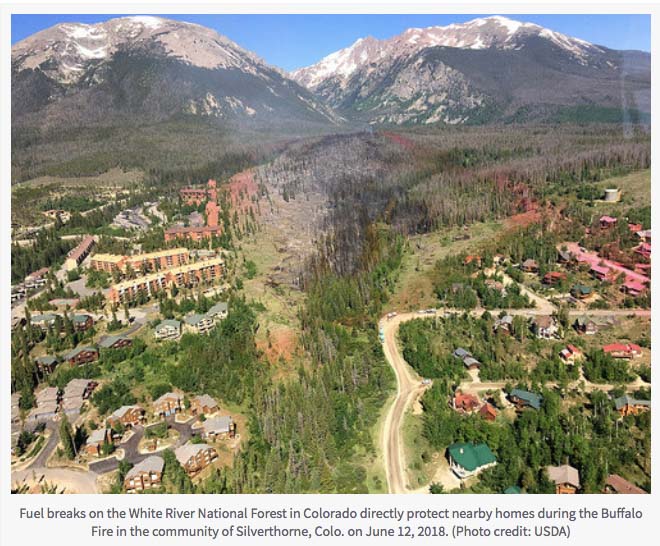
Below is an excerpt from an article at the Montana Free Press:
BOZEMAN — Ray Rasker, who has researched wildfire for more than a decade as the executive director of Bozeman-based nonprofit Headwaters Economics, makes a bold claim about wildfire and its human impacts.
“We don’t have a forest fire problem, we have a home ignition problem,” he said. “As soon as you come to that realization, it changes your view on wildfire.”
(UPDATE: Ray Rasker contacted us in a comment, below, to say, “The top quote [above] was something I mentioned to the reporter as something that was said by Dr. Jack Cohen, a long-time Fire Science Researcher with the U.S. Forest Service. It’s not my quote and I’m not trying to take credit for Jack’s insightful comment.”)
Often we hear about the costs of suppressing wildfires, but the cost of fire trucks, firefighters, dozers, and aircraft are only part of that cost.
Another excerpt:
Some of a community’s willingness to change growth policies, subdivision regulations, building codes, and the like can be attributed to economics. Although significant, the money spent putting out a wildfire is minor — about 9 percent — relative to fire’s total financial impact, Rasker said. “Fifty percent of the cost is borne by the community. That’s businesses that close, that’s the loss of tax revenue during the fire, that’s the cost of reconstruction — restoring your wetland, for example. Your tax base goes up in flames.”
When economic losses become severe enough, elected officials find the political cover they need to push for additional regulation. Rasker said he’s seen the dynamic at work in several communities CPAW has worked with, including Flagstaff, Arizona; Boulder, Colorado; and San Diego, California. “Now it’s not planning as a liberal agenda; now it suddenly becomes something that’s fiscally responsible.”
Such regulations can include mandating better egress roads to make subdivision evacuations safer, requiring new buildings to be constructed with fire-resistant material, and developing landscaping guidelines for homeowners. There was a time, Rasker said, when municipal fire codes mandating safety measures like sprinkler systems and marked fire exits were all but nonexistent, resulting in casualties. “In an urban environment, we’ve fixed this problem,” he said. “But when the houses are surrounded by trees on the outside of town, suddenly none of those rules apply,” Rasker said, referencing a lack of regulations and enforcement in many rural areas.

I fully agree that communities have created the situation they find themselves in. The fuel is supposed to burn in a cyclic manner. They homes are now intruding into the fuel and are not well protected or else they would not need to be defended.
This is Ray Rasker. I want to be clear about something. The top quote was something I mentioned to the reporter as something that was said by Dr. Jack Cohen, a long-time Fire Science Researcher with the U.S. Forest Service. It’s not my quote and I’m not trying to take credit for Jack’s insighful comment.
Thanks Ray. I added a note in the article above to make that clear.